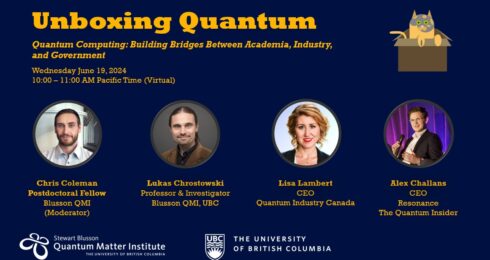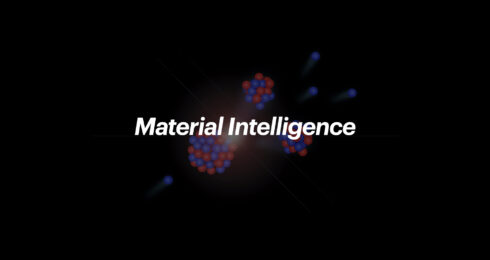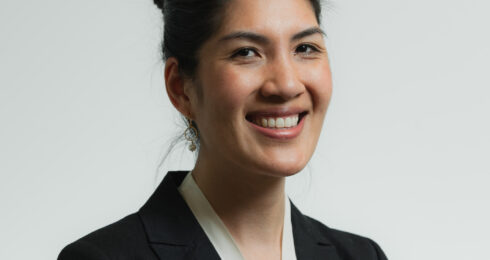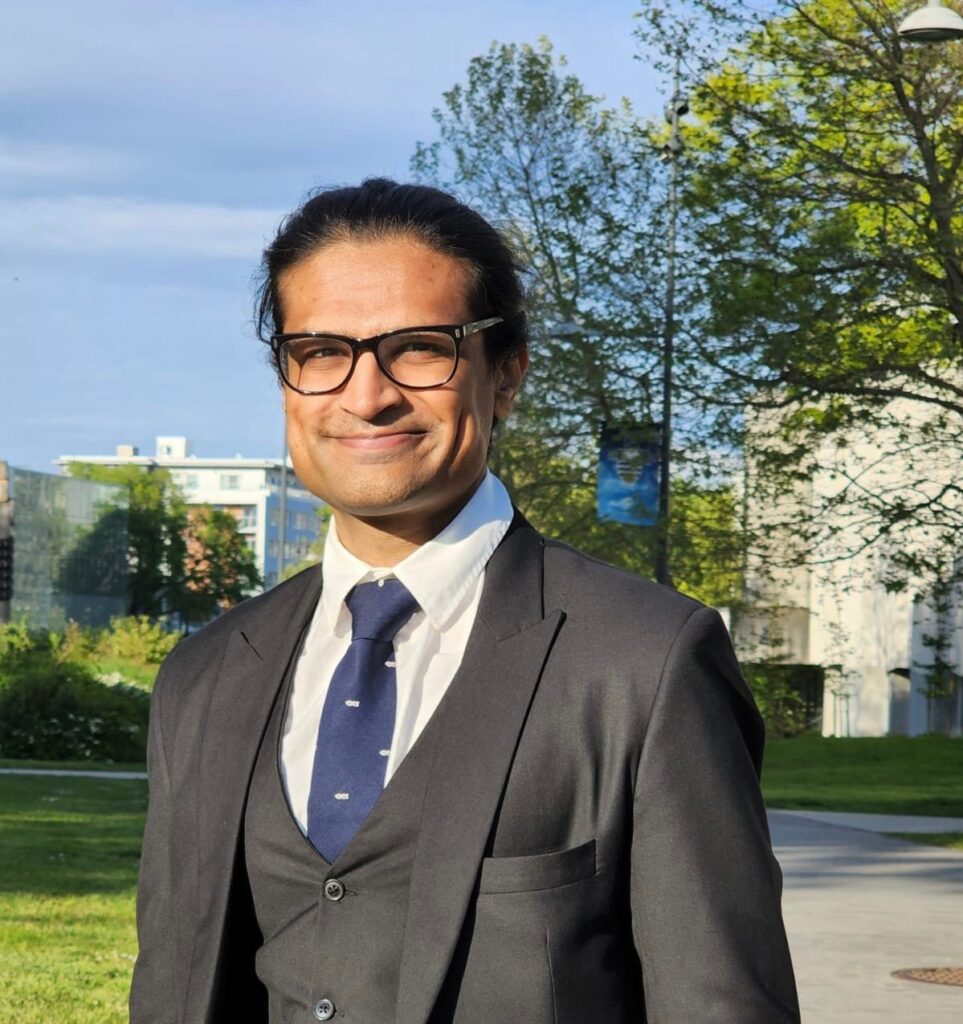
Pictured: Ashutosh Bhudia
Ashutosh Bhudia is off on his next adventure: he’s going on to study at one of Australia’s leading quantum computing institutes on a pair of scholarships, leaving Joseph Salfi’s lab to study with Salfi’s former postdoctoral supervisor, Sven Rogge. Bhudia recently completed a co-op year at the Stewart Blusson Quantum Matter Institute (Blusson QMI), where he worked on his Physics Honours thesis, Novel on-chip microwave filters for circuit quantum electrodynamics with spin qubits.
Bhudia will begin his PhD research at the University of New South Wales in Sydney in September, where he will continue working with superconducting quantum devices. In the meantime, he is enjoying a bit of downtime with family and friends at home in Nairobi, Kenya.
Bhudia’s UBC work primarily focused on design and development of novel compact, on-chip microwave superconducting filters for quantum computation.
“In circuit quantum electrodynamics with spin qubits, we create a hybrid system of a single electron spin strongly coupled to a photon mode confined in real space in a resonator,” said Bhudia. “Since the qubits are so small, the control lines have to be very close to the resonators, leading to the parasitic loss of photons from resonators to control lines.”
Microwave filters can be used to reflect lost photons back into the resonators. At the time, the industry-standard approach involved lumped element filters composed of interdigitated capacitors and nanowire inductors. These can be challenging to design and fabricate, since the capacitors have to be quite large and complex.
“The result is that now, distributed element filters can be as small as, or smaller than the lumped element filters, while providing favorable performance,” said Bhudia, who presented a poster detailing this work at the recent Materials and Mechanisms of Superconductivity (M2S) conference in Vancouver and valued the experience for the opportunity to share his research with a global audience of physicists who are experts in superconductivity.
As he begins his PhD studies, his research will take on new complexity as he expands his scope and takes on new responsibilities as a graduate student.
Bhudia is still figuring out what his project will be, but he will likely focus on microwave cavity coupling for atomically defined spin qubits. This is, in some ways, an expansion of the work he did at UBC; while he will not continue on with any specific UBC projects, he sees clear links between Salfi’s and Rogge’s research and looks forward to remaining in touch with his UBC colleagues.
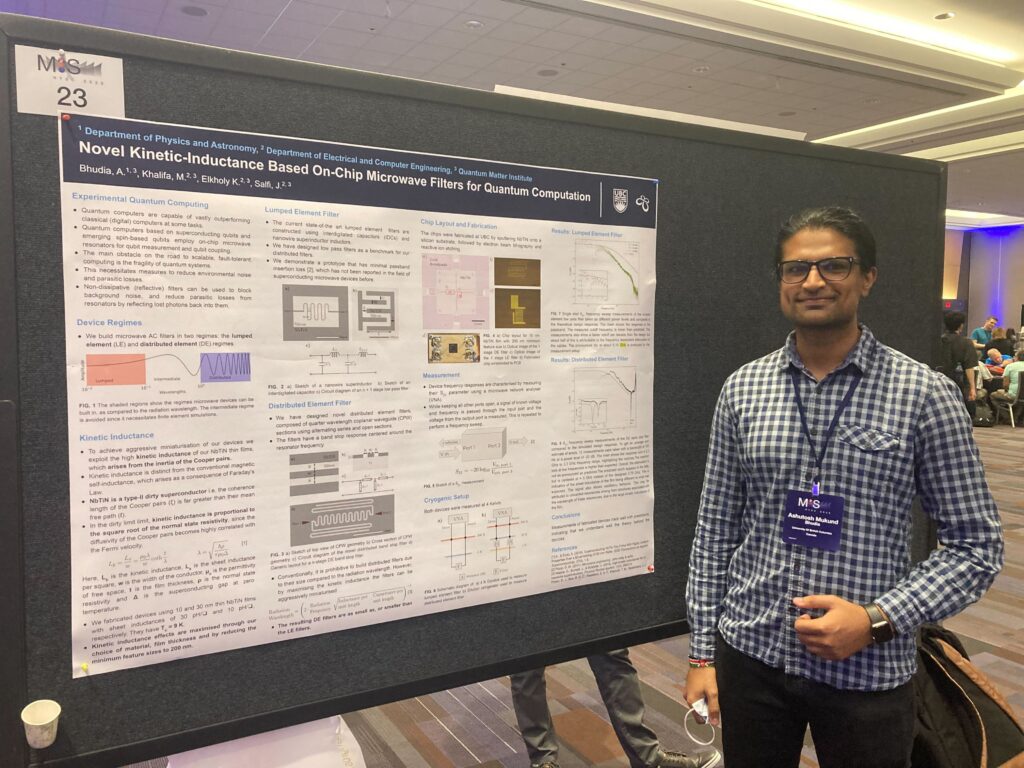
Pictured: Ashutosh Bhudia presents his poster at M2S 2022 in Vancouver in July, 2022.
No matter where his research takes him, Bhudia loves his work for its place at the intersection of physics and engineering, with all of the fascinating problem-solving and skills-building that are involved.
“Working with superconducting quantum devices is a great way to gain hands-on experience in engineering design and decision-making,” said Bhudia. “Superconducting quantum devices are robust, and are a good platform for scalable quantum computing. The architecture is highly transferable.”
For Bhudia, this next stage is exciting, if a little daunting, but he is encouraged by his experience at UBC.
“I’m excited to live and work in a new environment, and meet new people,” said Bhudia. “With the great experiences at Blusson QMI – in my academics, research and everyone who I met along the way that made it all possible – I am confident that I have the skills and background to excel in my PhD research.”
